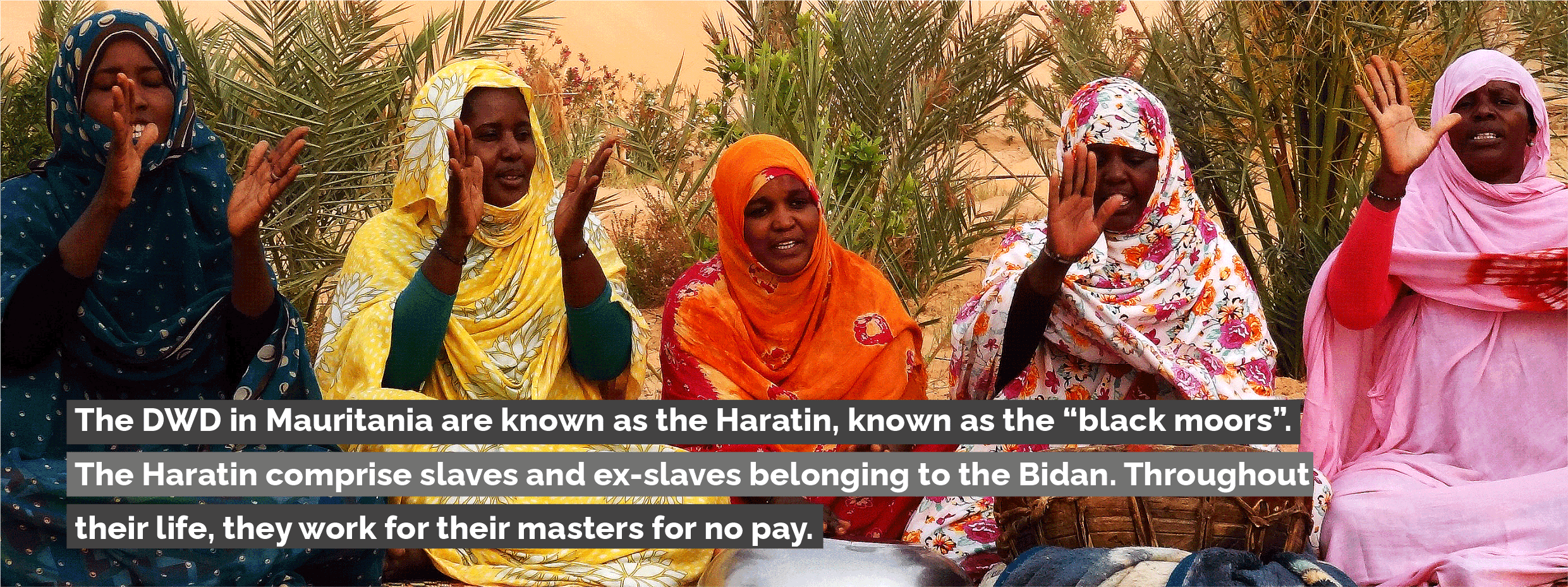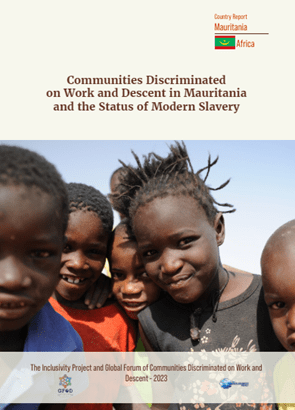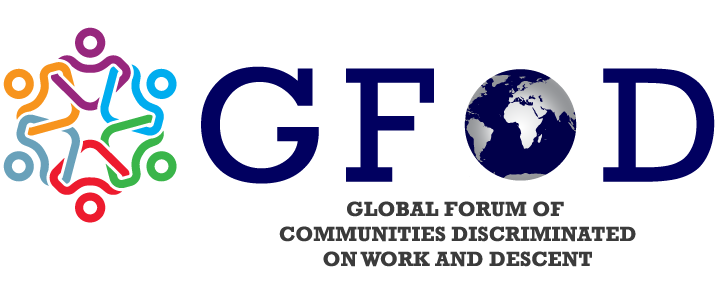
REPORTS

Communities Discriminated on Work and Descent in Mauritania and the Status of Modern Slavery
According to the local rights experts, the total CDWD population is estimated to be 2,838,032 persons, or 65 per cent ...
BANGLADSEH
THROUGH
CDWD LENSE
REPORT
DATA
INFOGRAPHIC
DISCUSSIONS
RECENT ACTIVITIES
NEWSLETTER
SUBMISSIONS
EVENTS
Bonded labour based on caste and descent also exists in Mauritania, where social hierarchies and exploitation are rooted in the former slave trade. The status of ‘slave-caste’ is ascribed to a person at birth. It all began in historical times when the white moors raided and enslaved people from the indigenous black population. They are today known as the Haratine or the Black Moors. The Haratine constitute the largest ethnic group and make up 40-60 percent of the total population. Regarded as the ‘slave caste’, they face extreme forms of discrimination and marginalization.
Mauritanian society is largely made up of three social groups. The first is the ruling Arab-Berber population known as the ‘white moors’ or Bidan. The second are black Africans living near the border with Senegal, coming from diverse groups such as the Wolof and Soninkes; many have ethnic ties with Mali and Senegal, and are farmers.The third group are the Haratin, known as the “black moors”.
The Haratin comprise slaves and ex-slaves belonging to the Bidan. Throughout their life, they work for their masters for no pay. Mauritania’s stratified society means former slaves or descendants of slaves still live under the stigma of their ‘slave- class’ and are ostracized by society. The Special Rapporteur on contemporary forms of racism has observed that Mauritanian society has been deeply marked by continuing discriminatory practices of an ethnic and racial nature.
Economic, political and social marginalization of the Haratin in Mauritania is well-reported. When in slavery, they are denied education and employment other than unpaid menial jobs; many are not allowed to marry. The Haratin identity remains strong, and due to the existing social hierarchy in Mauritania, it has been reported that “Haratins are often considered slaves and therefore have difficulties holding key political positions”.
Legal provisions against slavery do exist. One example is the anti-slavery bill, passed in August 2015. However, the practice reportedly remains extensive, affecting mainly the Haratin. ‘According to some estimates, 50 per cent of the Haratin community is subjected to de facto slavery through domestic servitude and bonded or forced labour; 90 per cent of those affected are women’.
Mauritanian society is largely made up of three social groups. The first is the ruling Arab-Berber population known as the ‘white moors’ or Bidan. The second are black Africans living near the border with Senegal, coming from diverse groups such as the Wolof and Soninkes; many have ethnic ties with Mali and Senegal, and are farmers.The third group are the Haratin, known as the “black moors”.
The Haratin comprise slaves and ex-slaves belonging to the Bidan. Throughout their life, they work for their masters for no pay. Mauritania’s stratified society means former slaves or descendants of slaves still live under the stigma of their ‘slave- class’ and are ostracized by society. The Special Rapporteur on contemporary forms of racism has observed that Mauritanian society has been deeply marked by continuing discriminatory practices of an ethnic and racial nature.
Economic, political and social marginalization of the Haratin in Mauritania is well-reported. When in slavery, they are denied education and employment other than unpaid menial jobs; many are not allowed to marry. The Haratin identity remains strong, and due to the existing social hierarchy in Mauritania, it has been reported that “Haratins are often considered slaves and therefore have difficulties holding key political positions”.
Legal provisions against slavery do exist. One example is the anti-slavery bill, passed in August 2015. However, the practice reportedly remains extensive, affecting mainly the Haratin. ‘According to some estimates, 50 per cent of the Haratin community is subjected to de facto slavery through domestic servitude and bonded or forced labour; 90 per cent of those affected are women’.


